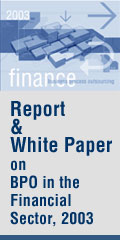|
|
Indian securitisation market is solid despite global meltdown
December 3, 2008:
A study by CRISIL reveals that the retail securitisation market in India is better placed than it is in
many other countries, notably the US. The size difference notwithstanding, the Indian market—which
is less than one–hundredth the size of the US market—has shown greater stability, with few rating
downgrades, and zero losses on investor payouts. CRISIL believes that the relative stability is because
of the superior profile of the assets securitised in India, and because the financial instruments created
out of the securitised assets in India are far less complex than those in developed markets. Investors in
securitised paper in India have no reason to fear crippling losses of the kind that have hit their US
counterparts.
The most significant factor characterising securitisation in India is the robustness of the underlying
retail assets. Unlike in the US, there has been no securitisation of ‘sub-prime’ housing loans in India.
The loans that have been securitised—principally loans for commercial vehicles, cars, two-wheelers,
and (to a limited extent) homes—were made on the strength of the earning capacity of the either the
assets or the borrowers. Thus, unlike the US market which turned out to be vulnerable to residential
property price movements, the securitisation market in India is relatively immune to asset price
fluctuations.
Moreover, although the collection behaviour of retail loans has worsened somewhat over the past two
years, CRISIL has stipulated higher credit enhancement levels to counteract this trend. Recent car and
commercial vehicle pools have had collections that are, on average, two percentage points lower than
those on older pools at a similar stage in their life-cycle. Against this, on average, credit enhancement
levels have risen by 2.5 to 4.5 percentage points, an increase of more than 50 per cent, over the past
two years. According to Mr. Prasad Koparkar, Head, Structured Finance Ratings, CRISIL,
“There will probably be more rating changes than before, but thanks to higher levels of credit
enhancement, investors’ payouts are still well protected from default.
Reassuringly, despite a few rating downgrades in the past few months, the stability of CRISIL’s
securitisation ratings is comparable to that of its other ratings. According to Mr Ajay Dwivedi,
Director, Structured Finance Ratings, CRISIL, “From the highest rating of ‘AAA(so)’ for
structured instruments, only about two per cent of instruments have been downgraded over a oneyear
timeframe. This is quite comparable with the behaviour of CRISIL’s ‘AAA’ ratings for other
instruments.” Nevertheless, CRISIL continues its globally pioneering practice of differentiating its
ratings for structured instruments from its ratings for other instruments, by using the ‘(so)’ suffix.
Global regulators today are discussing a requirement to differentiate ratings on structured instruments
from those on plain vanilla debt; the fact that CRISIL took this step more than a decade ago shows
how transparent and market-friendly credit rating in India is.
(This is press release of Crisil)
External audit quality of banks need to improve
Basel Consultative paper for assessing fair valuation practices
Basel Committee announces strategy to address lessons of banking crisis
IMF Welcomes Comprehensive European Response to Financial Crisis
IMF sees heightened risks to global financial stability
Global banking industry to see more restructuring & consolidation
Indian Banking sector challenged by domestic, not global, factors
Indian banking system is stable and sound, says RBI Governor
CLICK FOR SPECIAL SECTION ON GLOBAL FINANCIAL CRISIS
Subprime Crisis: A Special
CLICK FOR MORE FEATURES & STORIES
|
|


|


